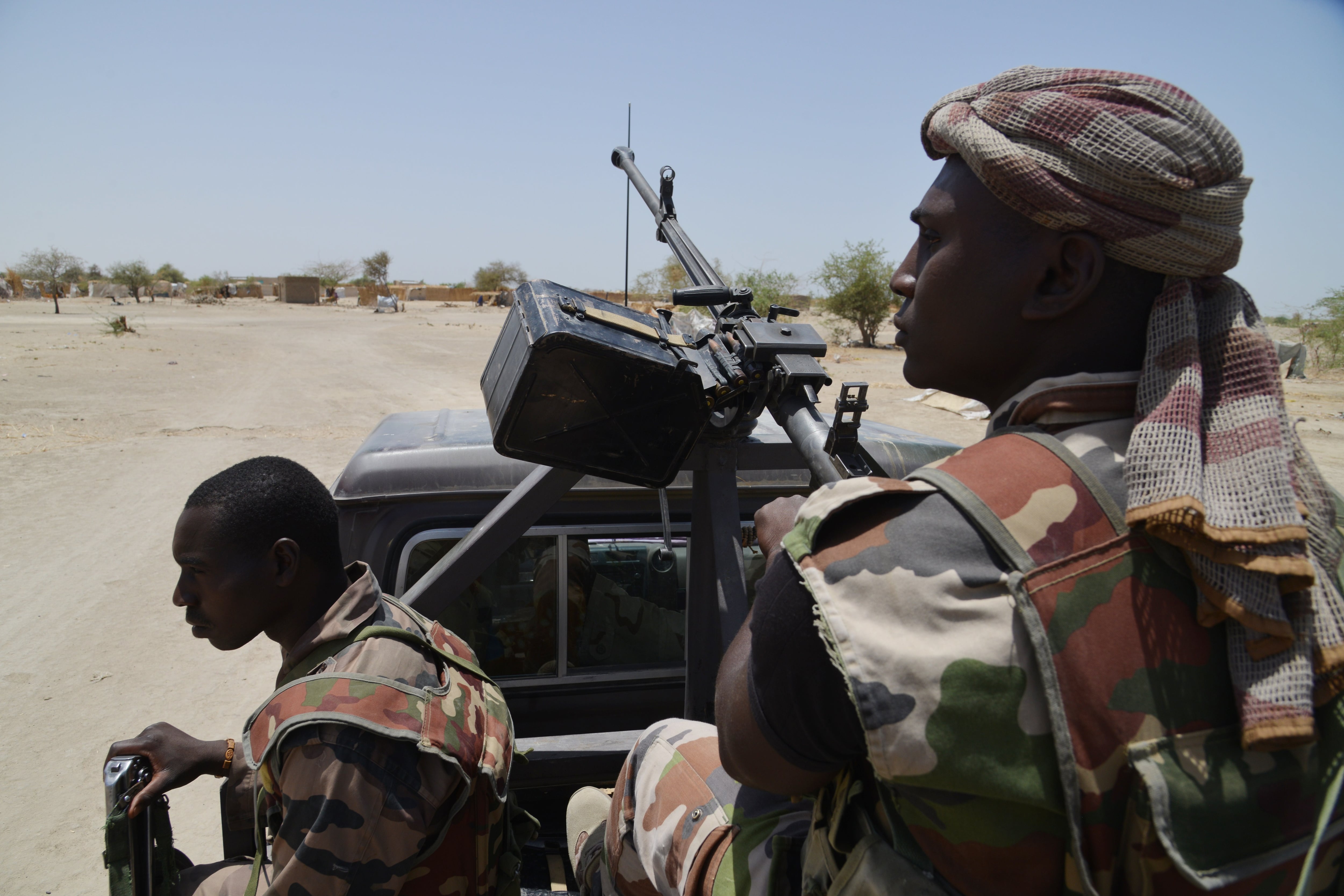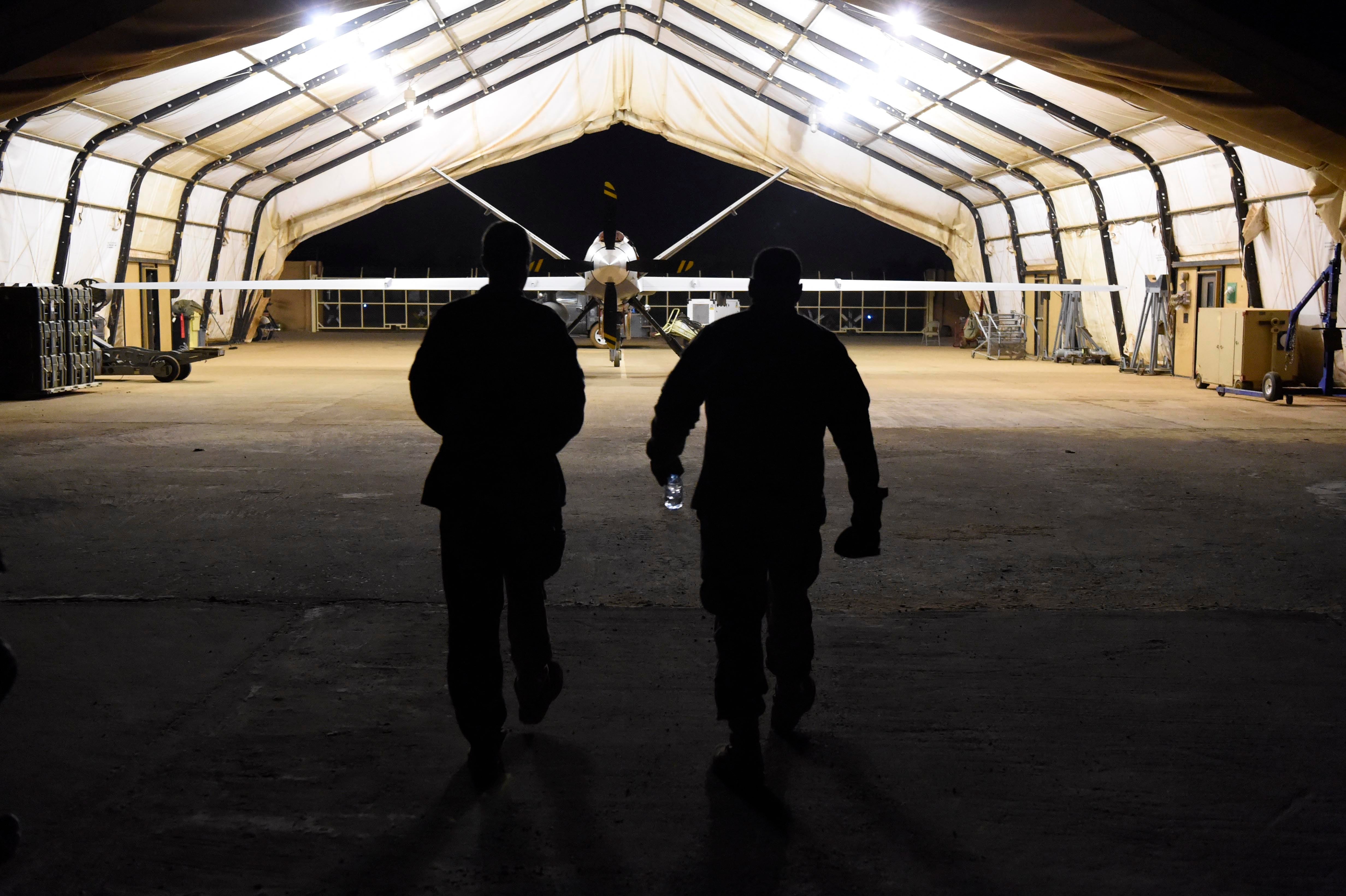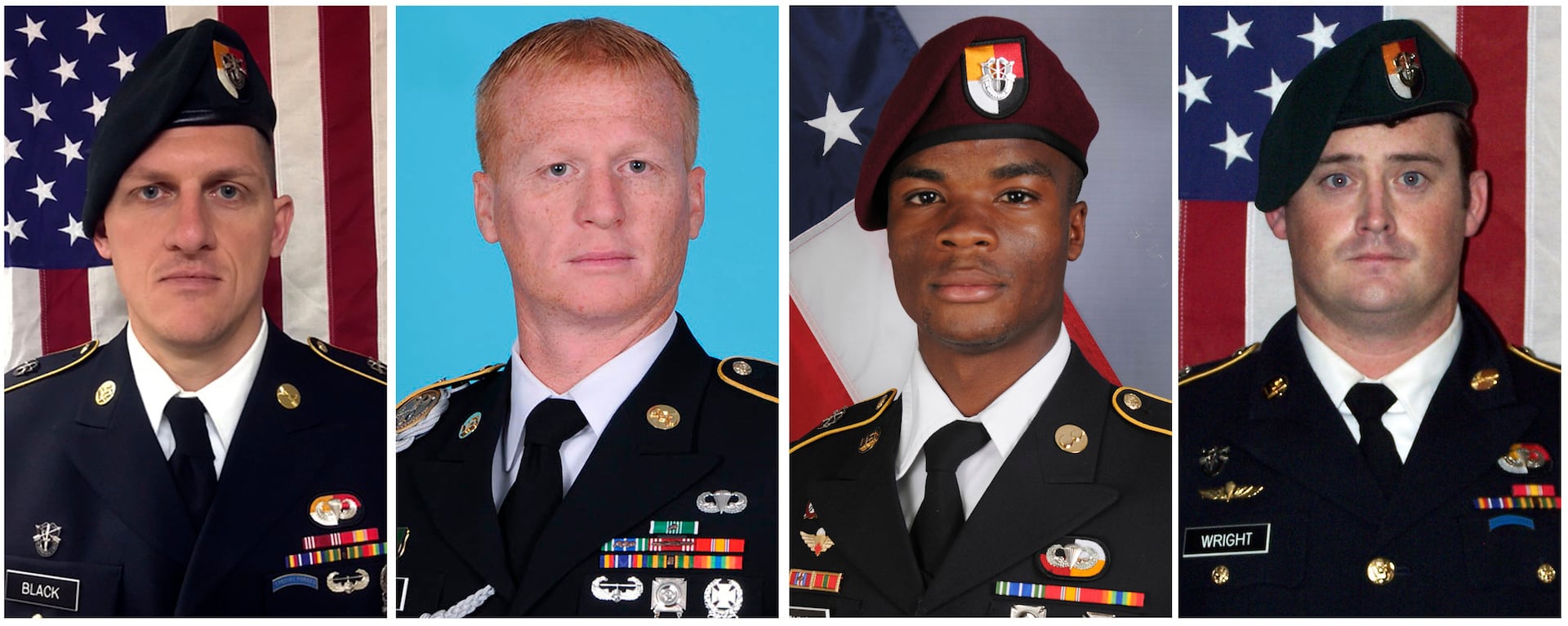[Editor’s note: Military Times is neither posting nor linking to the alleged video, which ISIS released as propaganda. Our reporters have analyzed the video in an attempt to dispel rumors and correct the record.]
The Islamic State on Sunday circulated a propaganda video on social media that allegedly depicts the Oct. 4 Niger ambush near the village of Tongo Tongo.
The video, which appears to be helmet camera footage from one of the four U.S. soldiers killed during the ambush, is heavily edited, chopping out significant portions of time, and does not account for the entire event in full detail.
What the video does appear to show is a team of U.S. special operators, armed with only M4 carbines, one M320 grenade launcher and low visibility vehicles for cover, pitted against an overwhelming enemy force. Absent heavy weapons and air support, the team appeared outgunned and isolated from their convoy’s main element.
While the video does dispel some rumors and initial reports, including that the U.S. troops did not have body armor, many questions still remain regarding the mission’s purpose, the lack of air cover, the poor intelligence regarding enemy activity in the region, and the light armament of the U.S. force.
“All of those unanswered questions should be answered when the investigation is complete and finalized and that should be in the next few weeks,” Maj. Sheryll Klinkel, a Pentagon spokeswoman, told Military Times. “Again, we’re just trying to make sure the family is fully briefed of all those details first, then Congress, and then the public.”
RELATED

In a separate statement to Military Times, Pentagon officials said they were aware of the video but would not confirm the authenticity of it.
“The release of these materials demonstrates the depravity of the enemy we are fighting. We encourage the news media to deny ISIS a propaganda success by not purchasing, showing or bringing undue attention to these images as it re-victimizes the affected families, amplifies IS atrocities and aids in their recruiting,” the statement read.
Copies of the video have proliferated since the initial leak. Several media outlets have opted to show the video but edited out the ISIS propaganda soundtrack.
RELATED

“While ISIS is suffering significant losses in both personnel and territory, they continue to use propaganda videos as a desperate recruiting tool,” the Pentagon said. “We ask that the media, the public and all responsible entities not aid these terrorists' recruiting efforts by viewing or bringing attention to these images.”
While Military Times has decided not to post the video, there remain lessons to be learned from reviewing the incident.
In the video, the team appears to have become separated from the main convoy. Two vehicles, with roughly three to four troops in each, dismount, take cover behind their vehicles and attempt to roll them forward under fire. The editing makes it difficult to track the soldiers’ movements, and the video eventually cuts to a Toyota Land Cruiser in a slow roll while three U.S. soldiers engage the enemy.

The U.S. troops appear to be maneuvering toward a red smoke grenade, perhaps as a rallying point amidst the confusion or to mark their position before a potential airstrike. Regardless, after one of the soldiers goes down and another is wounded, the two remaining look close to being overrun and make a break for a nearby tree line.
The two soldiers do not bound backwards, a tactic in which they would normally provide covering fire for one another as they run individually. Instead, they sprint, possibly because they were being pursued by too many militants to justify the delay of periodically stopping to fire.
Eventually, the individual with the helmet camera, suffering from unknown wounds, appears to fall and re-engage the militants. The footage ends after it appears the soldier with the camera succumbed to his wounds. Militants surround him and fire at point-blank range.
After assessing the footage, a former Marine Raider told Military Times, “I think whatever security assessment they got was incomplete or inaccurate.”
Facing a numerically superior force, U.S. troops normally have air assets to provide close air support. It remains unclear why aircraft were not able to support the U.S.-led team in a timely manner after the engagement began. Physical distance, poor communications, and a reliance on French aircraft possibly compounded the delayed response time.
Prior reports state that the patrol had traveled roughly 120 miles north of Niamey, the capital, on Oct. 3 to meet with local leaders before the morning ambush on Oct. 4 near the Nigerien border with Mali.
At the time, Libya and Somalia were the only two regions where U.S. aircraft had authority to launch kinetic strikes. That policy appears to have been revised in light of the ambush, as the Pentagon received permission from the government of Niger to begin flying armed drones from Niamey late last year.
Another policy that may face revision is the use of lightly armored, low visibility vehicles. Oshkosh M-ATVs, for instance, could be more appropriate for the evolving threat environment in Africa. Low visibility civilian vehicles may be of little benefit when the forces operating such vehicles are in distinctly American uniforms and place high visibility military items, like satellite antennas, on their vehicles’ exteriors.
The upcoming Niger report will hopefully shed more light on the events leading up to the ambush, as well as what can be learned to avoid future disasters.
Kyle Rempfer was an editor and reporter who has covered combat operations, criminal cases, foreign military assistance and training accidents. Before entering journalism, Kyle served in U.S. Air Force Special Tactics and deployed in 2014 to Paktika Province, Afghanistan, and Baghdad, Iraq.
Shawn Snow is the senior reporter for Marine Corps Times and a Marine Corps veteran.




